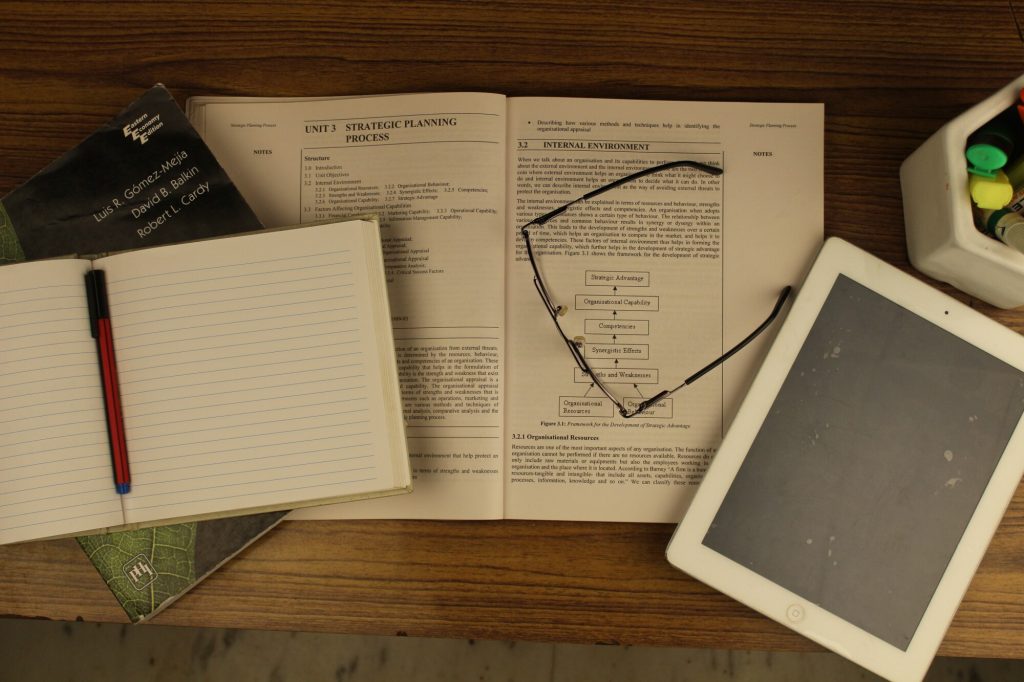
Taking the right textbook notes could make a big difference in your grades. When you’re just starting out taking college notes, it could take a bit of trial and error and some time to perfect your note-taking skills. Taking notes in your notebook and outside of your textbook will help you keep all of your texts in tip-top shape.
This is essential for ensuring you can resell your texts once the semester is over or return them to the rental company without any issues. Although you may feel tempted to underline, highlight, or jot notes down in your actual textbook, you can take successful notes without doing so.
In the guide below, you’ll find several helpful tips for taking notes and ensuring you study effectively. Continue reading to get started!
Focus on Main Ideas and Keywords
When taking notes in class, it’s important to place the majority of your focus on the main ideas and keywords mentioned. Trying to write down everything that’s said in a class by your professor or everything that’s written down by your professor is sometimes unrealistic. This also prevents you from actually listening to what’s being said and taught.
Instead, try to determine what the main topic or idea for that class is. Pick out key events or keywords being talking about. If the professor is using the textbook for the lecture, then make note of the pages discussed or reviewed for that class.
If you’re not using the textbook during the lecture, then after class, take a look in your textbook to find the chapters or pages where the same topic is mentioned so you can refer back to it when studying.
Understand Different Note-Taking Styles
Next, it’s important to understand that there are several different note-taking styles. To determine which one works best for you, go through each different style and find the right one for you. Here’s are a few different note-taking methods to try.
Cornell Method
In the Cornell method, you’ll create two columns. One column is for “cue” and the other is for “note.” Then, there’s one bottom section, which is for recording notes. This is called the summary section.
This method is good for extracting main ideas and concepts.
Outline Method
The outline method is a great way to keep your notes organized by creating a hierarchy. You will need a clear structure of information to create outline notes from. It’s best to use this method when taking notes for your textbook.
This method could be a bit more difficult when trying to take notes from a professor’s lecture.
Charting Method
For the charting method, you’ll create a chart to take your notes in. The chart will have rows and columns. When taking notes from information that’s statistical, this method can help greatly.
It’s best to use this method when taking notes straight from the textbook rather than from an actual lecture.
Boxing Method
The box method helps you separate different topics from one page of your textbook. The box method makes reviewing your notes simple, which makes it a great option for visual learners.
Sentence Method
The sentence method is one of the simplest methods of note-taking. If you can write quickly while listening to a lecture, then this could be a good method for you to use. However, this method isn’t great for taking a large number of notes.
This method isn’t as organized and can be difficult to go back through and review if there’s an extensive amount of them.
Discover What Works Best For You
Although there are a few note-taking methods that you can try, what’s most important is that you find what works best for you. You can test out a few of the methods listed above or create your own method. As long as you can read your notes and clearly understand them, that method will be what’s most effective for you.
It might take some trial and error and corrections to your own style before you come up with a customized note-taking style that’s right for you.
Record Lectures and Review Slides
Because it’s sometimes difficult to take notes while listening to a lecture, a great way to improve your note-taking is to record the lecture while it’s happening. You can then focus on the professor and what’s being taught. After class, you can listen to the recording and take notes from the recording.
Be sure to ask your professor for permission to record the lecture for note-taking purposes. If they write notes on the board, then you can take a picture of the notes with your cell phone and then review it later to take notes from. Most professors will also post lecture slides online for students to access after the lecture as well.
Remove Distractions While Taking Textbook Notes
To improve your note-taking skills, it’s always ideal to remove distractions. If you find yourself becoming distracted by your cell phone, people or noises around you, or something else, then you should relocate and place your phone on silent. Keep in mind that everyone studies and takes notes best in different environments.
Some people need absolute silence while others work better with some background noise. Find an ideal location for you, so you can take your notes efficiently.
Spare Your Textbook and Save Money
Taking notes outside of your textbook will help you spare your textbook and save you money. Textbook notes can be taken in your notebooks using these helpful tips listed above. When your textbook is left clean and free of any markings, you can then resell it or return it as a rental without the worry of fees or other issues.
Textbookrentals.com is your number one place for cheap textbooks! Save money while in college by comparing textbook prices and choosing to rent textbooks at the cheapest price rather than buy.
Browse our available textbooks to find the cheapest price option today.
 Rent Textbooks
Rent Textbooks